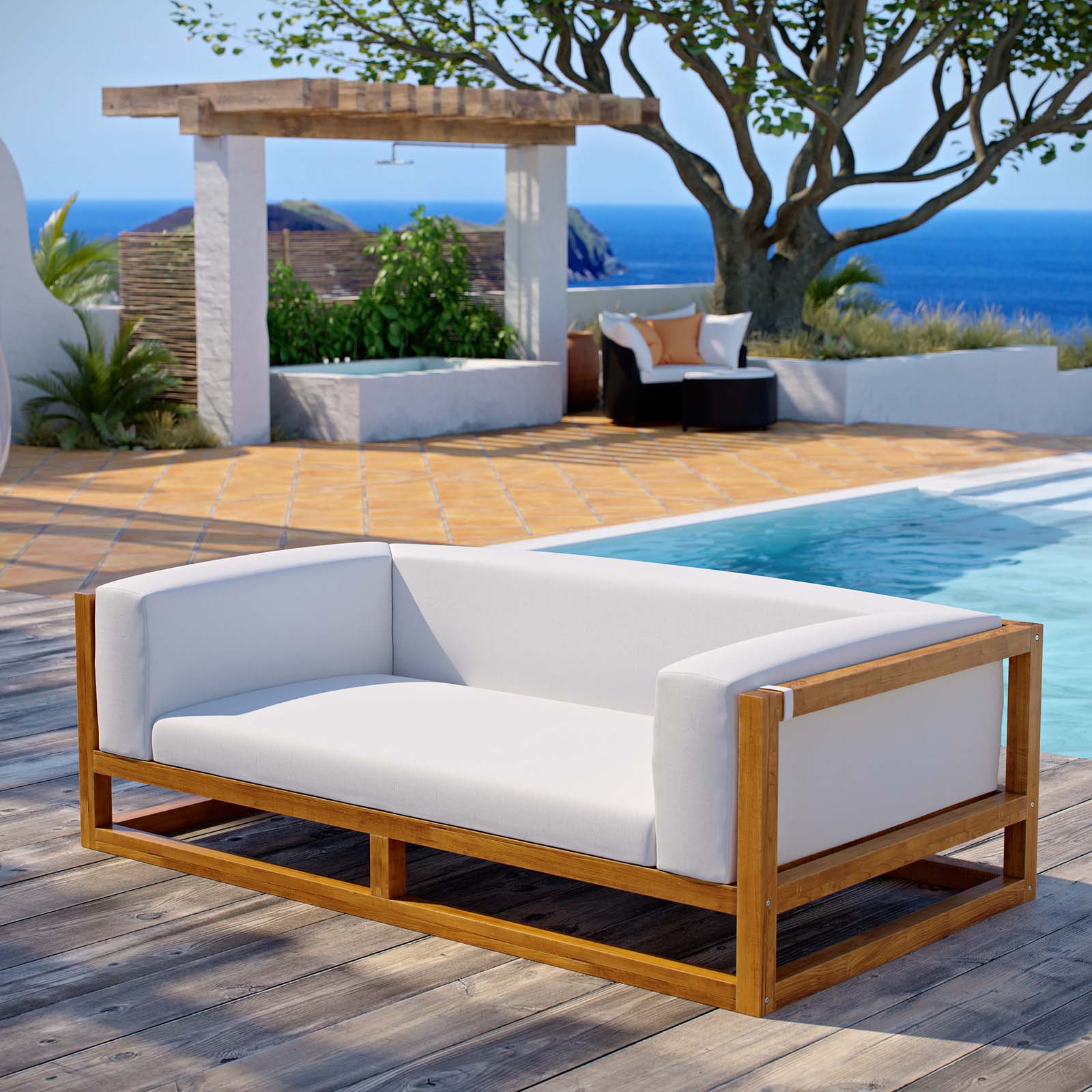On a warm summer afternoon, laze on a patio chair with a glass of iced lemonade, listening to the breeze rustle through the leaves. You may never stop to think that this leisurely outdoor lifestyle has a history that goes back thousands of years. Yes, outdoor furniture is not an invention of modern society. It has a long and rich history, just like us humans.
Today, let's travel through time and space to explore the origins and evolution of outdoor furniture and learn how they have developed from ancient civilizations to today, allowing us to enjoy the unique tranquility and comfort under the stars or in the garden.
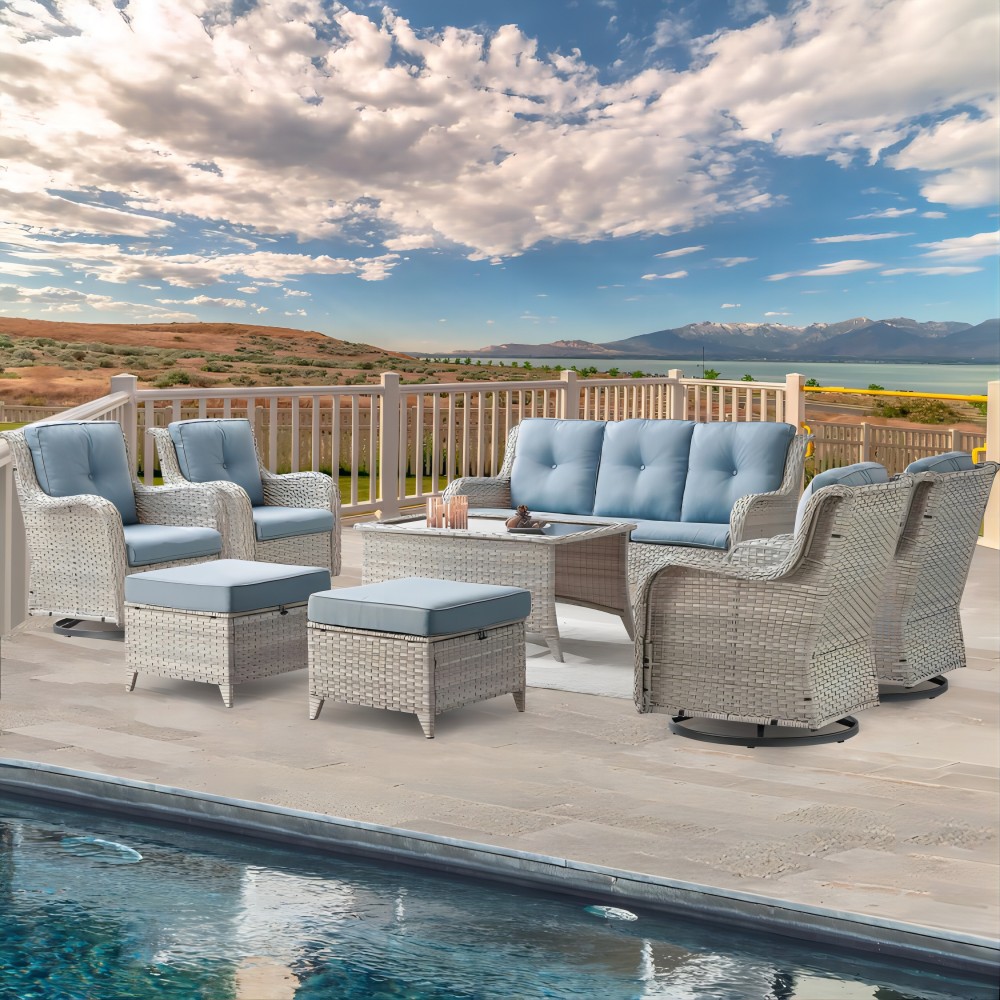
Antiquity: The origins of outdoor furniture
Let's start at the beginning. Thousands of years ago, when humans were still lighting campfires and sitting around stones, the concept of outdoor furniture may have quietly sprouted. One of the earliest outdoor furniture found was a bronze chair, believed to be used by Celtic warriors around 1000 BC. This chair was found buried in a grave with other everyday items, indicating that it was used as an outdoor chair, stool or footstool.
In addition to large chairs and small stools, archaeologists have also found benches in some ancient Greek cities, suggesting that they may have also been used for conversation or resting, rather than for strictly utilitarian purposes. Another common piece of outdoor furniture from this period was the triclinium - an ornate bow-shaped sofa made of cast iron. Although this style of seating did not become widely popular until the Roman era, it can be traced back to ancient Greece, when it seems to have been used for events such as symposiums and banquets.
In those early societies, outdoor activities were an important part of life, whether it was hunting, gathering, farming or religious ceremonies, many important social and daily activities took place outdoors. So while the outdoor furniture at the time may have been simple and crude, they laid the foundation for later developments. From the early days of ancient civilization, we can get a glimpse of how humans began to use natural resources to create a comfortable outdoor life.
Seats and furniture in ancient Egypt
Next, the time machine takes us to ancient Egypt, an era full of mystery and luxury. The ancient Egyptians not only had outstanding achievements in architecture and art, but their furniture design was also quite exquisite. Seats and furniture in ancient Egypt were not only used indoors, but also began to extend to the outdoors.
Ancient Egyptian nobles and pharaohs often held grand ceremonies and gatherings outdoors, and they needed some comfortable and solemn seats. As a result, wooden benches and high stools came into being. Archaeologists have found many exquisite chairs, tables and beds in ancient Egyptian tombs, which are usually made of sandalwood, ivory, gold and other precious materials. Early examples of chairs were found in places such as Hierakonpolis in southern Egypt, dating back to 3500 BC, made of leather and located on a wooden frame. These simple leather chairs may be common in daily use. Although most of these furniture are used indoors, there is no shortage of these luxurious outdoor seats in those courtyards full of sunshine and cool breezes.
It is worth mentioning that the seat design in ancient Egypt has already possessed considerable functionality and beauty. For example, folding chairs are one of them. This portable furniture was not only used in ancient Egypt, but also continued to be popular in ancient Rome and medieval Europe. It can be said that the outdoor furniture in ancient Egypt not only reflects their lifestyle, but also reflects their pursuit of perfection in functionality and decorativeness.
Outdoor furniture in ancient Greece
From the banks of the Nile in ancient Egypt, we continue on to ancient Greece. This was an era known for philosophy, art, and democracy. The ancient Greeks valued not only ideas and culture, but also the aesthetics of life, and their furniture design reflects this. Outdoor furniture in ancient Greece was not only used in daily life, but was also often used in public places such as theaters and squares.
Outdoor furniture in ancient Greece is known for its simple and elegant design. The most famous is the "Klismos chair", which has a graceful curve, a curved back, and outward-curved legs that make it look light and stable. The Klismos chair was not only popular at the time, but also influenced furniture design for hundreds of years. The ancient Greeks liked to hold banquets and social events outdoors, so their outdoor furniture was not only beautiful, but also practical.
Theaters in ancient Greece were also an important display of outdoor furniture. The seats in these open-air theaters were usually made of stone or wood, with a simple and functional design so that the audience could watch the performance comfortably for a long time. It can be said that the ancient Greeks were very creative in their use of outdoor space, and their furniture design also reflects this, which is both beautiful and practical.
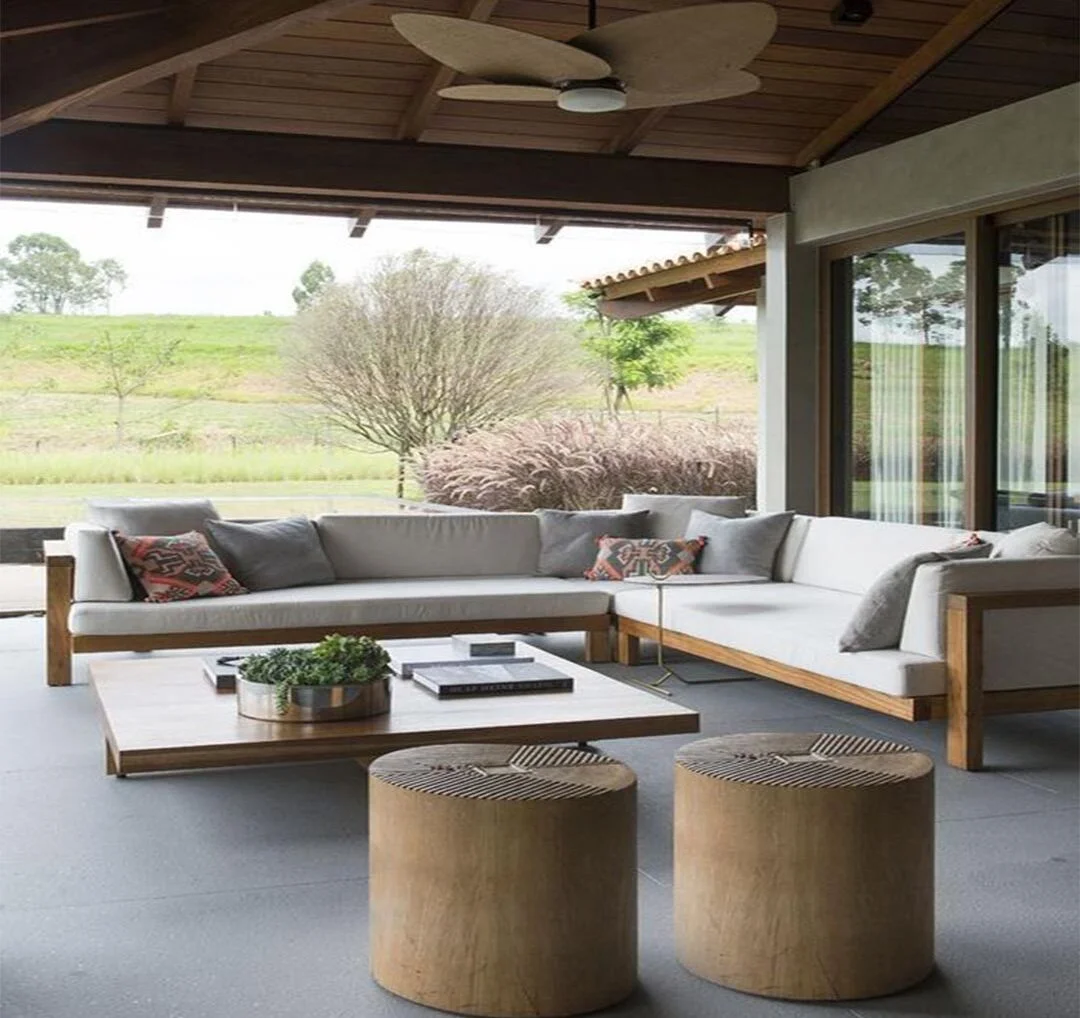
Outdoor furniture in ancient Rome
As time goes by, our journey comes to ancient Rome. This is an era that absorbed and carried forward Greek culture, and outdoor furniture has been further developed here. The outdoor furniture of ancient Rome not only continued the elegant style of ancient Greece, but also added more luxurious and extravagant elements.
The ancient Romans were keen on enjoying life. They liked to hold grand banquets and social events in well-designed gardens and courtyards. In order to meet this demand, the design of outdoor furniture in ancient Rome was more exquisite and the material selection was more diverse. Marble, bronze and gilded metal became important materials for making outdoor furniture, and exquisite carving and inlay craftsmanship made these furniture more luxurious.
The Romans attached great importance to "open-air life" (Vita all'aperto), and their gardens were usually decorated with benches, tables and pavilions for family members and guests. The most representative of them is the "Roman couch", which is usually placed in the courtyard for reclining rest or dining. Their design not only takes into account beauty, but also focuses on comfort, so that the Romans can enjoy a relaxing experience like home outdoors.
More interestingly, the ancient Romans also invented a kind of outdoor dining furniture called "triclinium". This kind of furniture usually consists of three benches and a central table for people to lie down and eat outdoors. Triclinium reflects the Romans' love for outdoor life and also shows their exquisite taste in outdoor activities.
The public baths in ancient Rome are also an important place for outdoor furniture. The bathhouse is not only a place for bathing, but also a place for socializing and relaxation. In order for people to rest comfortably after bathing, a large number of benches and lounge chairs are arranged in the bathhouse. These furniture are usually made of marble, which is durable and beautiful.
Outdoor furniture in the Middle Ages and Renaissance
The glory of the ancient Roman Empire gradually faded, and Europe entered the Middle Ages. The development of outdoor furniture in this period was slow due to war and social unrest, but it did not completely stagnate. As time went on, the cultural revival of the Renaissance brought new vitality to outdoor furniture.
In the Middle Ages, outdoor furniture was mainly practical and relatively simple in design. Due to the relatively closed social structure of this period, outdoor activities were more concentrated in castles and manors. Stone benches and wooden furniture became the mainstream, and they were often arranged in courtyards, gardens and church squares for people to rest and communicate. Although medieval outdoor furniture lacked some of the luxury of the ancient Roman period, they were equally durable and practical.
In the Renaissance, with the revival of art and culture, outdoor furniture began to regain its luster. European aristocrats in the Renaissance liked to build exquisite gardens in their manors, and these gardens naturally had exquisite outdoor furniture. Influenced by ancient Greek and Roman culture, the outdoor furniture design of the Renaissance pursued classical beauty and integrated the artistic style of the time. Beautifully carved benches, gorgeous pavilions and exquisite tables and chairs once again became important elements in the lives of aristocrats.
Renaissance outdoor furniture was not only for practicality, but more for highlighting the owner's status and taste. The furniture design of this period was characterized by symmetry, proportion and details, and the materials were more diverse. In addition to traditional wood, stone and metal were also widely used. Renaissance outdoor furniture is not only a work of art, but also a symbol of status.
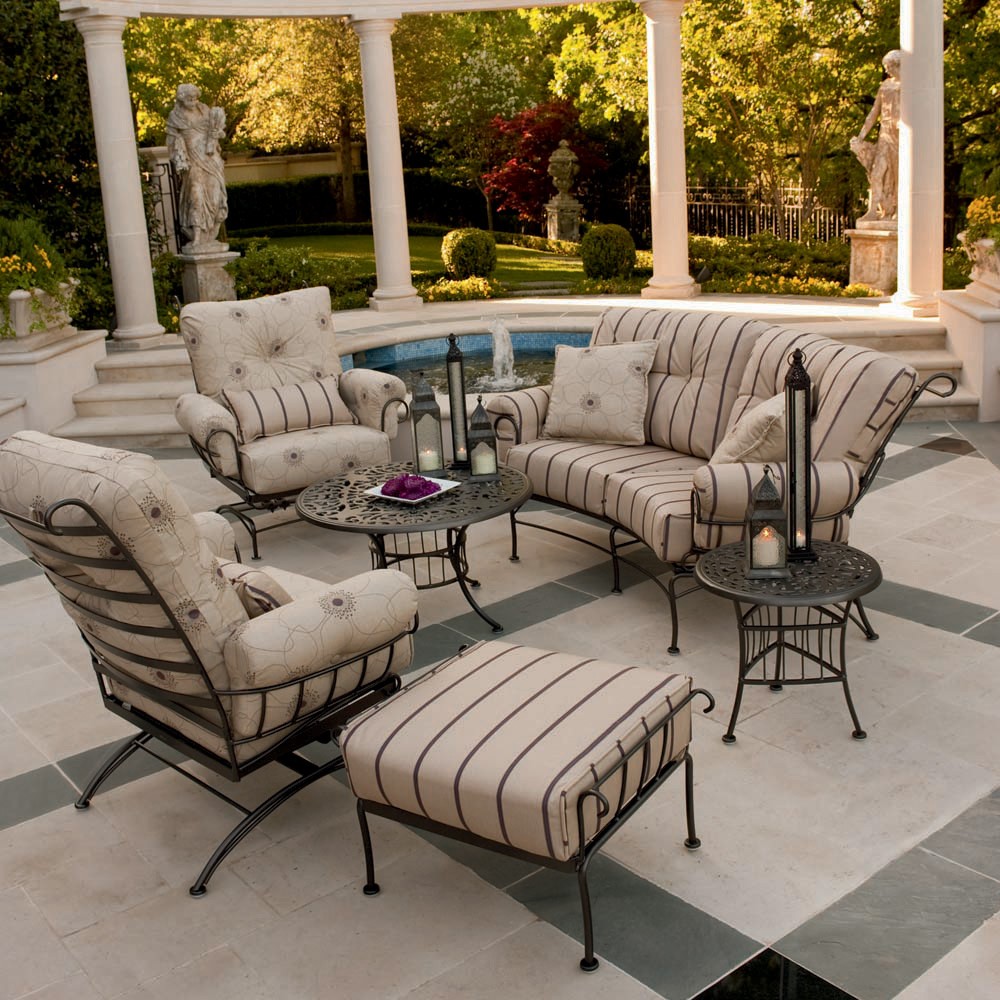
Outdoor furniture from the 18th to 20th centuries
As time goes by, we come to the 18th to 20th centuries, which is a colorful era in the history of outdoor furniture development. The outdoor furniture of this period has not only undergone many changes in design, but also has greatly developed materials and manufacturing processes. Whether it is Baroque, Rococo or Victorian style, the design of outdoor furniture shows the aesthetics and culture of that era.
Baroque and Rococo period
In the early 18th century, Baroque and Rococo styles dominated European furniture design. The Baroque style is known for its complex decoration, exaggerated carvings and grand visual effects, while the Rococo style is more refined and soft, focusing on curves and details. Outdoor furniture in this period often uses complex carvings and decorations, presenting a luxurious visual effect. Cast iron and carved wood became the main materials, combined with gorgeous fabrics and brilliant colors, making outdoor furniture a highlight in the aristocratic courtyard.
Victorian era
In the Victorian era of the 19th century, the advancement of the Industrial Revolution brought great progress in manufacturing technology. The design of outdoor furniture has further developed. The British in the Victorian era were particularly keen on decorating their gardens. They placed a large number of furniture outdoors, such as benches, rocking chairs and rattan sofas. These furniture were often decorated with intricate carvings and gilding, showing people's pursuit of luxurious life at the time. At the same time, in North America, Adirondack chairs became the representative of outdoor furniture. This simple wooden chair is popular for its comfort and practicality. Victorian outdoor furniture not only focuses on beauty, but also emphasizes durability and functionality, which makes these furniture still popular today.
Outdoor furniture design in the early 20th century
In the early 20th century, outdoor furniture design ushered in a wave of modernism. Simplicity, practicality and functionality became the main theme of design during this period. Designers began to try new materials such as steel, aluminum and plastic, which not only made outdoor furniture lighter and more durable, but also made the design more diverse and innovative. Designers of the Bauhaus school created many classic outdoor furniture during this period. They emphasized that form follows function, abandoned unnecessary decoration, and pursued pure pragmatic aesthetics.
The evolution of outdoor furniture materials
In the history of the development of outdoor furniture, the evolution of materials is an important theme. In ancient times, outdoor furniture was mostly made of stone and wood, which are naturally strong but inadequate in the face of bad weather. With the advancement of technology, people began to explore new materials to meet the needs of outdoor use.
Metal materials, such as cast iron and steel, gradually became the main materials for outdoor furniture in the 18th and 19th centuries. They are not only strong and durable, but also easy to process and can be made into a variety of complex shapes and patterns. Cast iron benches and tables became typical representatives of this period.
In the early 20th century, with the emergence of synthetic materials, outdoor furniture design entered a new stage. Materials such as plastics, fiberglass and aluminum alloys were gradually used in the production of outdoor furniture. These materials are not only light and durable, but also have good corrosion resistance and can maintain stability in various bad weather conditions. In addition, these materials can also be produced on a large scale industrially, which greatly reduces the cost of outdoor furniture and makes it more popular.
Rattan and bamboo, as natural materials, were also widely used in the 20th century. Especially in tropical and subtropical areas, rattan furniture is popular for its lightness, good breathability and natural beauty. In modern outdoor furniture design, rattan and bamboo are often combined with metal or synthetic materials to create furniture products that are both beautiful and practical.
Outdoor furniture designers in the early 20th century
In the early 20th century, with the rise of modernism, the design of outdoor furniture entered a new era. Designers of this period began to rethink the function and form of furniture. They emphasized the combination of simplicity, practicality and beauty, and created a series of classic outdoor furniture works.
One of the important designers was Le Corbusier. He was one of the founders of modern architecture and had a profound influence on outdoor furniture design. Le Corbusier's outdoor furniture design is characterized by simple lines and functionality. His works such as the LC4 lounge chair are still regarded as classics of modern furniture design.
In addition, Mies van der Rohe was also one of the important designers in the early 20th century. His works emphasized the design concept of "less is more", focusing on the essence of materials and the simplicity of structure. Van der Rohe's Barcelona Chair and outdoor furniture designs with metal frames are still widely used and imitated.
These designers not only changed the appearance and function of outdoor furniture, but also set an example for later designers, and their works still influence modern furniture design.
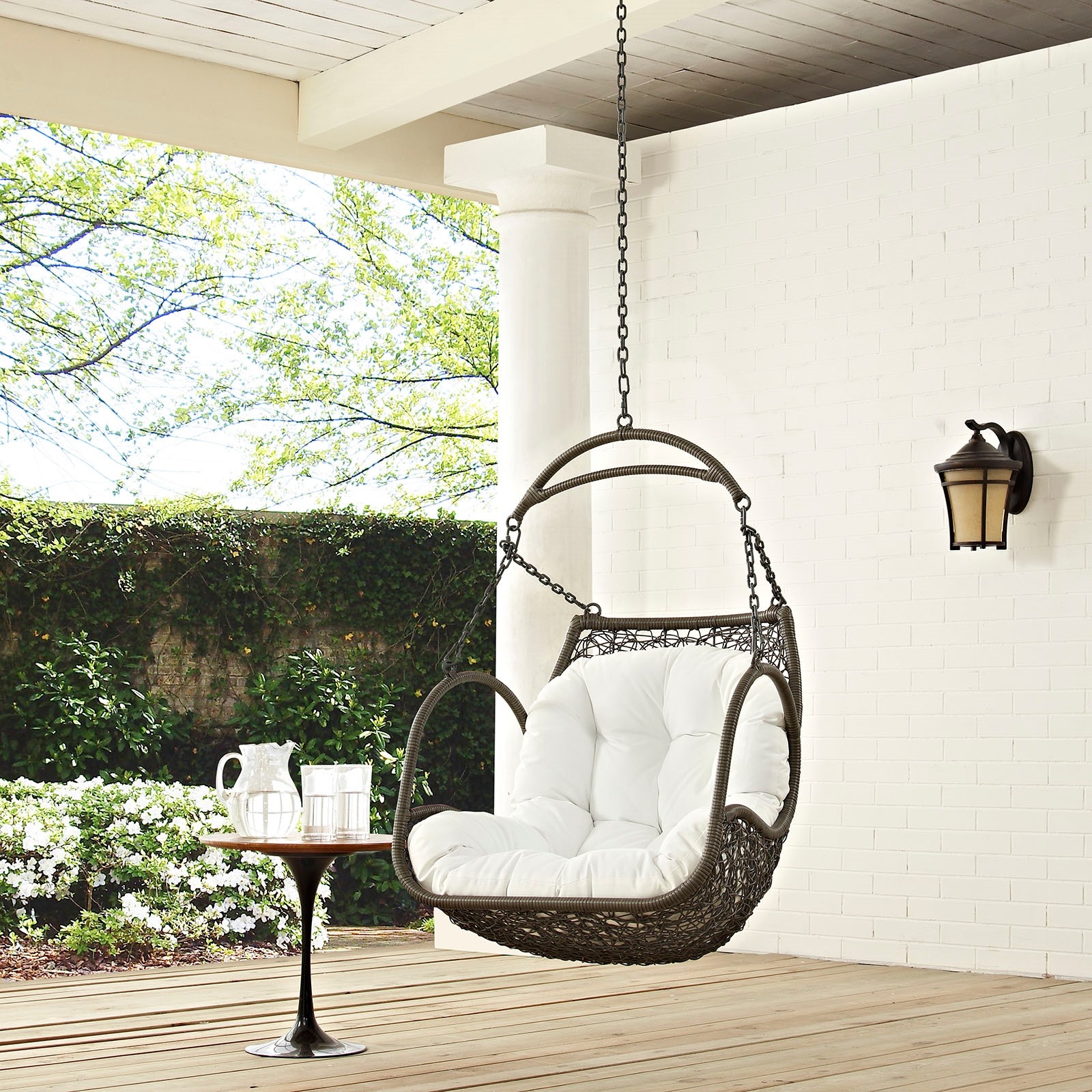
Trends in outdoor furniture in the 20th century
Outdoor furniture design in the 20th century has undergone many changes with the changes of the times. The modernist movement in the early 20th century made outdoor furniture design more concise and practical, emphasizing functionality and structural rationality. With the economic prosperity after World War II, outdoor furniture began to enter the public family and became an important part of courtyards, terraces and gardens.
In the mid-20th century, with the economic recovery after World War II, outdoor furniture design ushered in an era of simplicity and practicality. Designers began to pay more attention to functionality and comfort, as well as the durability and environmental protection of materials. Plastic furniture was widely used during this period. They were not only inexpensive, but also colorful, making them very suitable for mass family use.
In the 1970s, the retro trend rose again, and people began to pursue natural and traditional design elements again. Rattan and solid wood furniture are popular again, and outdoor furniture design pays more attention to the use of natural materials and the return of handicrafts. At the same time, the increase in environmental awareness has also prompted designers to explore sustainable materials and design concepts.
Modern outdoor furniture and outdoor designers
Time flies, and we finally come to the modern era. Today's outdoor furniture design is more diverse and personalized. Designers continue to break through traditions in materials, forms and functions, creating countless amazing works. Whether you like modern minimalist style or prefer natural and simple design, modern outdoor furniture can meet your needs.
Modern outdoor furniture designers are more free in their creations. They are no longer restricted by traditional design rules, but boldly combine different elements. For example, Italian designer Patricia Urquiola is famous for her bold use of colors and innovative material combinations. Her outdoor furniture works are full of modernity and artistic atmosphere.
In addition, modern outdoor furniture design also pays more attention to the application of technology. Smart furniture, environmentally friendly materials and modular design have become new trends. Designers are committed to providing people with a more comfortable, convenient and environmentally friendly outdoor living experience.
